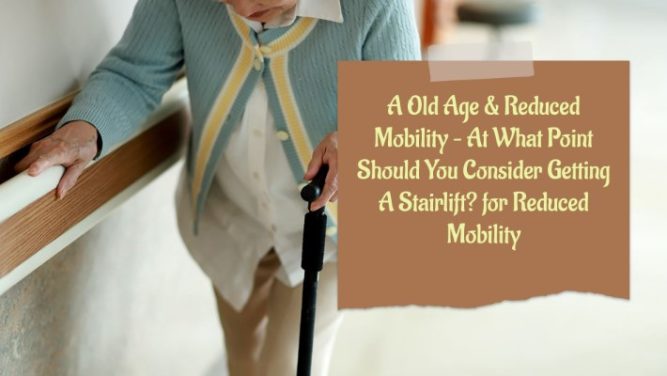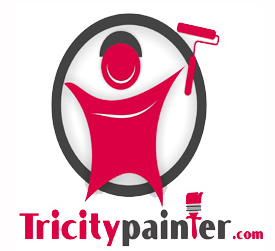
Are you looking for reliable mobility solutions to make your home more accessible? A stairlift transforms challenging staircases into safe, manageable paths for individuals with limited mobility.
These mechanical devices serve as a lifeline for many homeowners, offering independence and peace of mind. By installing a chair that glides smoothly along a rail mounted to your staircase, you gain the freedom to move between floors safely and comfortably.
Our focus is on straight stairlifts – the most common and cost-effective option for homes with standard staircases. These practical installations provide:
Enhanced mobility for daily activities
- Increased home safety
- Greater independence
- Improved quality of life
Let’s explore how a straight stairlift can transform your home accessibility and restore your confidence in moving between floors.
Understanding Straight Stairlifts
A straight stairlift is a motorized mobility device designed specifically for straight staircases without curves, turns, or landings. This type of stairlift runs on a single, linear track that follows your staircase’s direct path from top to bottom.
Basic Components of a Straight Stairlift
The basic components of a straight stairlift include:
- Track System: A sturdy aluminum rail mounted directly to your stair treads
- Power Unit: A battery-operated motor that drives the chair along the track
- Carriage: The mechanical unit that connects the chair to the track
- Chair Unit: A comfortable seat with safety features like armrests and seat belts
How Straight Stairlifts Work
The operating mechanism is straightforward – the chair glides smoothly along the track using a rack and pinion drive system. When activated via the chair controls or remote, the motor engages the gears, moving the chair up or down the track at a steady pace of approximately 0.2 meters per second.
Power Source and Charging
Your straight stairlift operates on 24-volt batteries that automatically recharge when the chair is parked at its charging points, ensuring the lift remains functional even during power outages.
Advantages of Installing a Straight Stairlift in Your Home
Installing a straight stairlift transforms your home into an accessible haven, offering life-changing benefits for you and your family members. Here’s what you can expect when adding this mobility solution to your living space:
1. Enhanced Independence
With a straight stairlift, you can enjoy greater freedom and autonomy in your daily life. Here are some ways it enhances your independence:
- Navigate your entire home without assistance
- Maintain your daily routines and activities
- Access all floors of your house at your own pace
- Keep your personal schedule without depending on others
2. Safety Improvements
Safety is a top priority, especially when it comes to navigating stairs. A straight stairlift offers several safety features to give you peace of mind:
- Eliminate the risk of stair-related falls
- Built-in safety sensors detect obstacles
- Secure seatbelts prevent accidents
- Emergency stop buttons provide instant control
- Battery backup ensures operation during power outages
3. Property Value Benefits
Investing in a straight stairlift can also have positive effects on the value of your property. Here are some potential benefits:
- Add market appeal to multi-story homes
- Attract aging buyers in retirement communities
- Create a disability-friendly property
- Increase resale potential in senior-focused markets
4. Quality of Life Enhancements
A straight stairlift can significantly improve your overall quality of life. Here are some ways it can make a difference:
- Reduce physical strain on joints and muscles
- Save energy for other daily activities
- Maintain social connections throughout your home
- Keep pets and belongings accessible on all floors
A straight stairlift installation represents a significant home modification that pays dividends in both practical use and property value. The combination of safety features, independence, and accessibility makes this investment particularly valuable for homeowners planning to age in place or those with mobility challenges.
Your home becomes a more welcoming space with reduced physical barriers and increased freedom of movement. The peace of mind that comes from knowing you can safely navigate between floors adds immeasurable value to your daily living experience.
Other Benefits of Installing A Straight Stairlift In Your Home
Straight stairlifts bring unmatched comfort to daily living through their thoughtful design features. The padded seats and ergonomic controls allow users to navigate stairs without physical strain. Many models include adjustable armrests and footrests to accommodate different body types and preferences.
Enhanced Living Space Accessibility
- Access to all home levels at any time of day
- No need to relocate bedrooms to ground floor
- Maintain full use of upstairs storage spaces
- Keep enjoying upper-level views and balconies
Comfort-Focused Features
- Cushioned seating with adjustable height options
- Smooth start-stop technology preventing jerky movements
- Swivel seats for easy mounting and dismounting
- Foldable design to maximize hallway space
The integration of assistive technology in straight stairlifts creates a seamless living experience across multiple floors. Users can carry personal items, laundry, or groceries while seated securely. The quiet operation ensures minimal disruption to household activities.
Modern straight stairlifts adapt to your daily routine with remote control operation and power-saving modes. You can call the lift from different floors, making it convenient for multiple users in the same household. The battery backup systems guarantee reliable operation during power outages, providing peace of mind for continuous mobility access.
Signs You May Need a Straight Stairlift Installation
Recognizing the right time to install a stairlift can significantly impact your quality of life. Here are key indicators that suggest you might benefit from a straight stairlift:
1. Persistent Joint Pain
You may be experiencing joint pain if you:
Feel discomfort in your knees, hips, or ankles while climbing stairs
Need to rest between steps due to joint strain
Use the handrail more frequently for support
2. Changes in Daily Habits
If you find yourself avoiding upper floors in your home, sleeping downstairs to minimize stair usage, or requesting help from others to fetch items from different floors, it may be a sign that you need a stairlift.
3. Physical Warning Signs
Be aware of any physical warning signs such as loss of balance or coordination on the stairs, shortness of breath during stair climbing, increased fatigue after using the stairs, or muscle weakness in your legs.
4. Medical Considerations
Certain medical factors may also indicate the need for a stairlift. These include recent surgery affecting mobility, diagnosed conditions impacting balance or strength, and prescribed medication causing dizziness or fatigue.
5. Safety Concerns
If you’ve experienced near-miss incidents on the stairs, have a fear of falling while using steps, or find it difficult to carry items up and down stairs, it’s important to address these safety concerns.
These signs often develop gradually. You might notice one or several of these indicators becoming more prominent in your daily life. Early recognition of these signs allows for proactive planning and installation before mobility challenges become severe.
Cost Considerations for Installing a Straight Stairlift
The cost of a straight stairlift installation varies based on several key factors:
- Staircase Length: Longer staircases require extended rails, increasing material costs
- Power Source: Battery-operated models cost differently than direct electrical connections
- Safety Features: Additional elements like swivel seats or footrests affect pricing
- Installation Requirements: Structural modifications or electrical work impact total costs
Hidden costs to consider include:
- Annual maintenance fees ($100-200)
- Extended warranty coverage
- Potential electrical upgrades
- Future removal costs
Many suppliers offer flexible payment plans or rental options to make stairlifts more accessible. Medicare typically doesn’t cover stairlift costs, but some insurance providers might offer partial coverage. Local organizations and charities sometimes provide financial assistance for mobility equipment installations.
Your location can influence pricing through varying labor costs and building regulations. Request detailed quotes from multiple providers to understand the full scope of expenses for your specific situation.
Choosing the Right Straight Stairlift for Your Home
Selecting a straight stairlift requires careful consideration of your specific needs and home layout. Professional consultation plays a vital role in making an informed decision.
What a Qualified Stairlift Specialist Will Do
A qualified stairlift specialist will:
- Assess your mobility requirements
- Measure your staircase dimensions
- Evaluate weight capacity needs
- Check power outlet availability
- Review safety feature options
Key Features to Discuss with Your Specialist
Your chosen stairlift should match your physical capabilities and comfort preferences. Key features to discuss with your specialist include:
- Seat style and padding options
- Control placement (left or right-handed)
- Swivel seat functionality
- Folding capabilities
- Emergency stop mechanisms
How Professional Installers Can Help
Professional installers can also identify potential installation challenges and recommend appropriate solutions. They’ll guide you through available models, explaining the benefits of each option based on your specific situation.
The Importance of a Thorough Home Assessment
A thorough home assessment helps ensure your Cairo Contracting Ltd meets safety standards and building regulations. This evaluation includes checking staircase width, wall strength, and landing space requirements.
Call Us for More Details –
Cairo Contracting Ltd
5920 Arlington St. Vancouver,
BC V5R 4N3
Phone-604-849-3903
Email- sales@cairocontracting.ca









